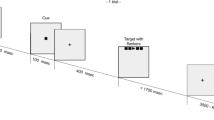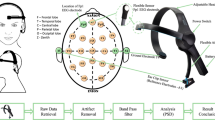Abstract
Previous research has suggested that methohexital, a short-term barbiturate, alters activity in the primary epileptogenic area. It can be assumed that drug-induced activation of the epileptogenic focus provides a rapid and safe method to obtain a sufficient amount of information relevant for the lateralization and localisation of the primary epileptogenic area. This study shows that methohexital changes spectral power in the beta band derived from magnetoencephalographic (MEG) signals over the hemisphere ipsilateral to the primary epileptogenic area. This effect was demonstrated for 10/13 of the investigated patients suffering from unilateral temporal lobe epilepsy (TLE). The side and location of the primary epileptogenic area of these patients (5 left TLE, 8 right TLE) was determined invasively during presurgical evaluation. During a 1-2 minute interval after intravenous bolus injection of 100 mg methohexital a clear lateralization effect in the beta band was observed, which differed marginally between fronto-central, fronto-temporal and temporo-parietal brain regions. In addition, bilateral spectral power changes were obtained in the theta, alpha and gamma bands that differed between brain regions. Analyses of simultaneously recorded scalp electroencephalographic (EEG) data revealed effects consistent with those of the MEG analysis. The reduced enhancement of beta band spectral power of MEG recordings provides a potential application for the non-invasive lateralization of the primary epileptogenic area.
Similar content being viewed by others
References
Aasly, J., Silfvenius, H. and Zetterlund, B. Barbiturate effects on EEG abnormality in complex artial epilepsy. J Neurol, 1989, 236: 15–20.
Bauer, G. EEG, drug effects, and central nervous system poisoning. In E. Niedermeyer and F. H. L. da Silva (Eds.), Electroencephalography, Urban and Schwarzenberg, Baltimore, 1982: 479–489.
Brazier, M.A.B. and Finesinger, J.E. Action of barbiturates in the cerebral cortex. Arch Neurol Psychiat, 1945, 53: 51–58.
Brazier, M. Prenarcotic doses of barbiturates as an aid in localizing diseasd brain tissue. Anesthesiology, 1969, 31: 78–83.
Brockhaus, A., Hufnagel, A., Nadstawek, J., Ebeling, B.J., van Roost, D. and Elger, C.E. Activation of epileptogenic foci by thiopental in electrocorticographic recordings with subdural strip electrodes and intrahippocampal depth electrodes. J Epilepsy, 1995, 8: 153–163.
Brockhaus, A., Lehnertz, K., Wienbruch, C., Kowalik, A., Burr, W., Elbert, T., Hoke, M. and Elger, C.E. Possibilities and limitations of magnetic source imaging of metho-hexital-induced epileptiform patterns in temporal lobe epilepsy patients. Electroenceph clin Neurophysiol, 1997, 102: 423–436.
Celesia, G.G. and Paulsen, R.E. Electroencephalographic activation with sleep and metho-hexital. Arch Neurol, 1972, 27: 361–363.
Dasheiff, R. and Kofke, W. Evaluation of the thiopental test in epilepsy surgery patients. Epilepsy Res, 1993, 15: 253–238.
Duffy, F., Jensen, F., Erba, G., Burchfiel, J. and Lombroso, C. Extraction of clinical information from electroencephalographic background activity: The combined use of brain electrical activity mapping and intravenous sodium thiopental. Ann Neurol, 1984, 15: 22–30.
Engel, J. Jr. (Ed.) Surgical Treatment of the Epilepsies. Raven Press, New York, 1993: 740–742.
Essig, C.F. and Fraser, H.F. Electroencephalographic changes in man during use and withdrawal of barbiturates in moderate dosages. Electroenceph clin Neurophysiol, 1958, 10: 649–656.
Fuster, B., Gibbs, E. and Gibbs, F. Pentothal sleep as an aid to the diagnosis and localization of serzure discharges of the psychomotor type. Dis Nerv System, 1948, 7: 199–202.
Harris, R. and Paul, R. The use of methohexitone in electrocorticography. Electroenceph clin Neurophysiol, 1969, 27: 333–334.
Hufnagel, A., Burr, W., Elger, C.E., Nadstawek, J. and Hefner, G. Localization of the epileptic focus during methohexital-induced anesthesia. Epilepsia, 1992, 33: 274–284.
Kaplan, P.W. and Lesser, R.P. Prolonged extracranial and intracranial in-patient monitoring. In J.A. Wada and R. J. Ellingson (Eds.), Handbook of Electroencephalography and Clinical Neurophysiology, Elsevier, 1990, 4: 121–154.
Kennedy, W.A. and Hill, D. The surgical prognostic significance of the electroencephalo-graphic prediction of Ammon's horn sclerosis in epileptics. J Neurol Neurosurg Psychiat, 1958, 21: 24–30.
Lieb, J.P., Sclabassi, R., Crandal, P. and Buchness, R. Comparison of the action of diazepam and phenobarbital using EEG-derived power spectra obtained form temporal lobe epileptics. Neuropharmacology, 1974, 13: 769–783.
Lieb, J.P., Sperling, M., Mendius, R., Skomer, C. and Engel, J. Jr. Visual versus computer evaluation of thiopental induced EEG changes in temporallobe epilepsy. Electroenceph clin Neurophysiol, 1986, 63: 395–407.
Lieb, J.P., Babb, T.L. and Engel, J. Jr. Quantitative comparison of cell loss and thiopental-induced EEG changes in human epileptic hippocampus. Epilepsia, 1989, 30: 147–156.
Modica, P.A., Tempelhoff, R. and White, P.F. Pro-and anticonvulsant effects of anesthetics (part ii). Anesth Analg, 1990, 70: 433–444.
Pampiglione, G. Induced fast activity in the EEG as an aid in the location of cerebral lesions. Electroenceph clin Neurophysiol, 1952, 4: 79–82.
Press, W.H., Flannery, B.P., Teukolsky, S.A and Vetterling, W.T. Numerical Recipes in C. Cmbridge University Press, Cambridge, 1988: 437–447.
Sannita, W.G., Balbi, A., Giacchino, F. and Rosadini, G. Quantitative EEG effects and drug plasma concentration of phenobarbital, 50 and 100 mg single-dose oral administration to healthy volunteers: evidence of early CNS bioavailability. Neuropsychobiology, 1990, 23: 205–212.
Schwartz, J., Feldstein, S., Fink, M., Shapiro, D.M. and Itil, T.M. Evidence for a characteristic EEG frequency response to thiopental. Electroenceph clin neurophysiol, 1971, 31: 149–153.
Wilder, B.J. Activation of epileptic foci in psychomotor epilepsy. Epilepsia, 1969, 10: 418.
Wilder, B.J. Electroencephalogram activation in medically intractable epileptic patients. Arch neurol, 1971, 25: 415–426.
Wyler, A.R., Richey, E.R., Atkinson, R.A. and Herman, B.P. Methohexital activation of epileptogenic foci during acute electrocorticography. Epilepsia, 1987, 28, 490–494.
Author information
Authors and Affiliations
Corresponding author
Rights and permissions
About this article
Cite this article
Wienbruch, C., Eulitz, C., Lehnertz, K. et al. Methohexital-Induced Changes in Spectral Power of Neuromagnetic Signals: Beta Augmentation is Smaller Over the Hemisphere Containing the Epileptogenic Focus. Brain Topogr 10, 41–47 (1997). https://doi.org/10.1023/A:1022211007269
Issue Date:
DOI: https://doi.org/10.1023/A:1022211007269




